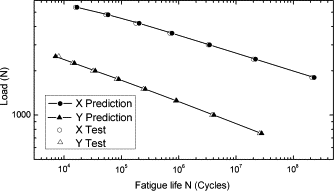Fatigue life refers to the number of cycles of stress a material can withstand before it fails due to fatigue. When a material is subjected to repeated cyclic loading, cracks can form and propagate through the material, leading to failure.
A shortening of the fatigue life of a material means that the material can withstand fewer cycles of stress before failure. This can occur due to several reasons, including:
- Material degradation: Over time, the material may degrade due to environmental factors such as exposure to heat, moisture, or chemicals. This can weaken the material and reduce its fatigue life.
- Overloading: If a material is subjected to stress levels that exceed its design limits, its fatigue life can be significantly reduced. Overloading can cause the material to develop cracks more quickly, leading to failure.
- Manufacturing defects: If a material has defects such as voids, inclusions, or improper bonding, its fatigue life can be shortened. These defects can act as stress concentration points, causing cracks to form and propagate more quickly.
- Design issues: If a component is poorly designed or is subjected to unexpected loading conditions, its fatigue life can be reduced. For example, if a part experiences torsional loading that was not considered in its design, its fatigue life may be shorter than expected.
Overall, a shortening of the fatigue life of a material can have serious consequences in various applications, such as in structural engineering or aerospace industries, where failure due to fatigue can lead to catastrophic consequences. Therefore, it is crucial to carefully consider factors that can affect the fatigue life of a material and take appropriate measures to ensure its safe and reliable operation.
 (909) 987-1774
(909) 987-1774 Email Us
Email Us









